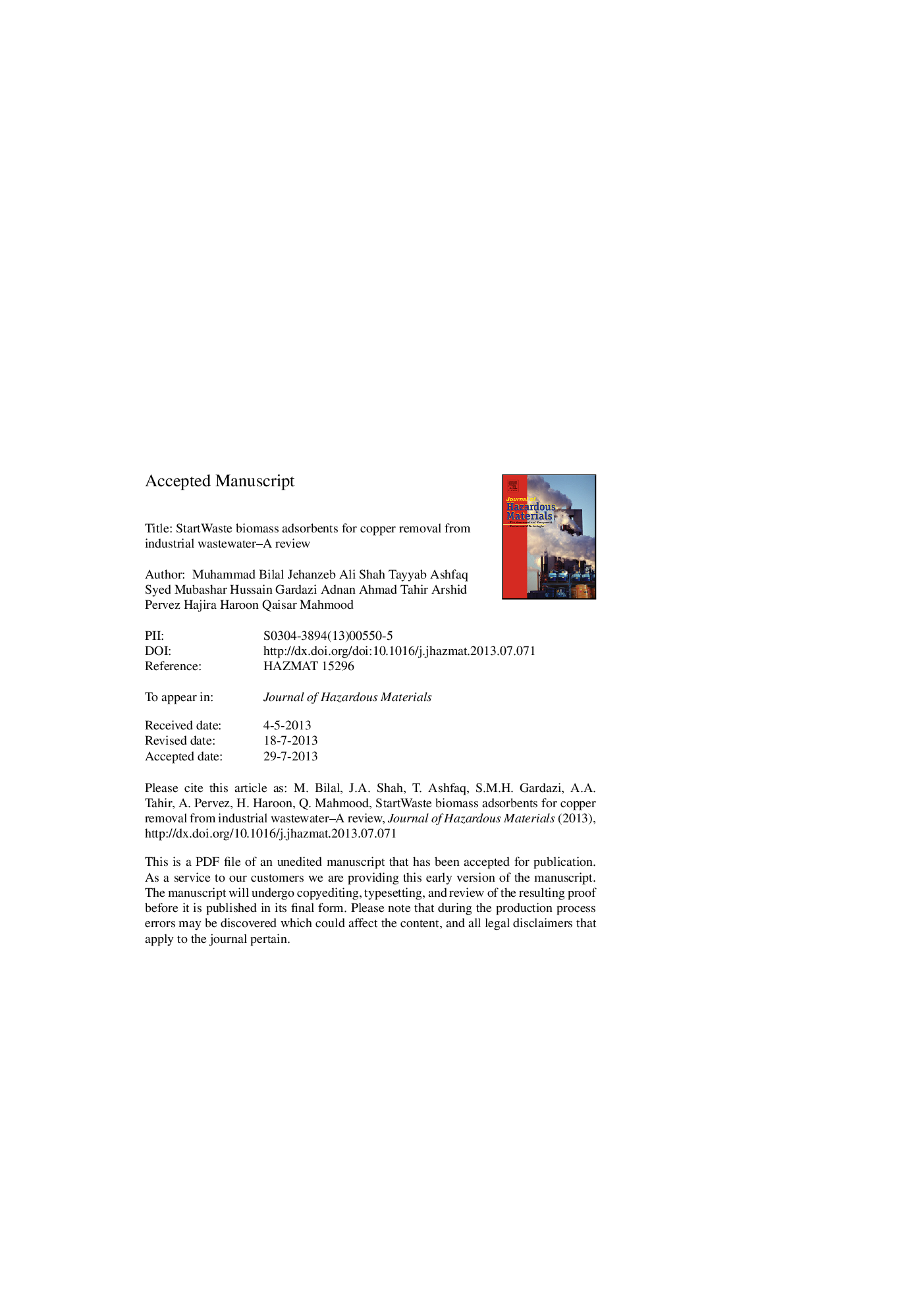| Article ID | Journal | Published Year | Pages | File Type |
|---|---|---|---|---|
| 10372636 | Journal of Hazardous Materials | 2013 | 55 Pages |
Abstract
Copper (Cu2+) containing wastewaters are extensively released from different industries and its excessive entry into food chains results in serious health impairments, carcinogenicity and mutagenesis in various living systems. An array of technologies is in use to remediate Cu2+ from wastewaters. Adsorption is the most attractive option due to the availability of cost effective, sustainable and eco-friendly bioadsorbents. The current review is dedicated to presenting state of the art knowledge on various bioadsorbents and physico-chemical conditions used to remediate Cu2+ from waste streams. The advantages and constraints of various adsorbents were also discussed. The literature revealed the maximum Cu adsorption capacities of various bioadsorbents in the order of algae > agricultural and forest > fungal > bacterial > activated carbon > yeast. However, based on the average Cu adsorption capacity, the arrangement can be: activated carbon > algal > bacterial > agriculture and forest-derived > fungal > yeast biomass. The data of Cu removal using these bioadsorbents were found best fit both Freundlich and Langmuir models. Agriculture and forest derived bioadsorbents have greater potential for Cu removal because of higher uptake, cheaper nature, bulk availability and mono to multilayer adsorption behavior. Higher costs at the biomass transformation stage and decreasing efficiency with desorption cycles are the major constraints to implement this technology.
Related Topics
Physical Sciences and Engineering
Chemical Engineering
Chemical Health and Safety
Authors
Muhammad Bilal, Jehanzeb Ali Shah, Tayyab Ashfaq, Syed Mubashar Hussain Gardazi, Adnan Ahmad Tahir, Arshid Pervez, Hajira Haroon, Qaisar Mahmood,
